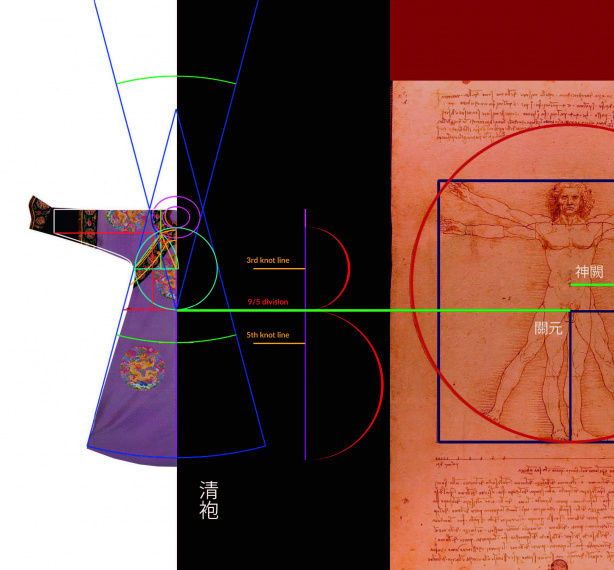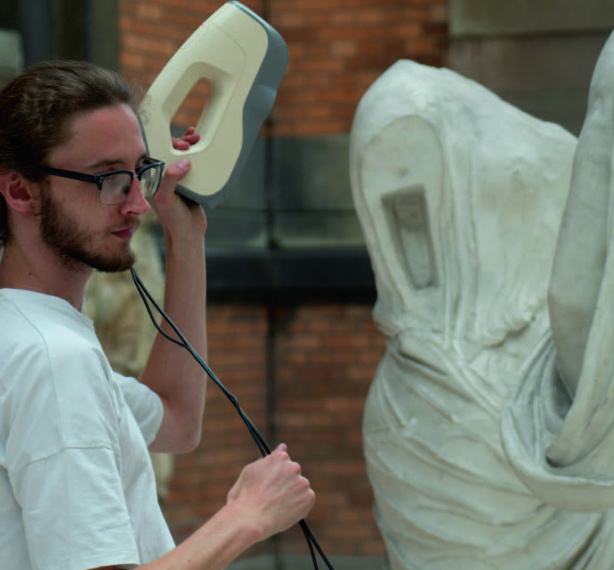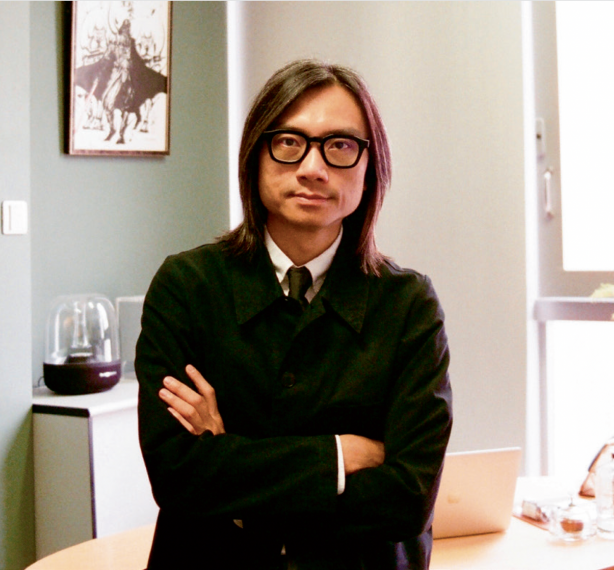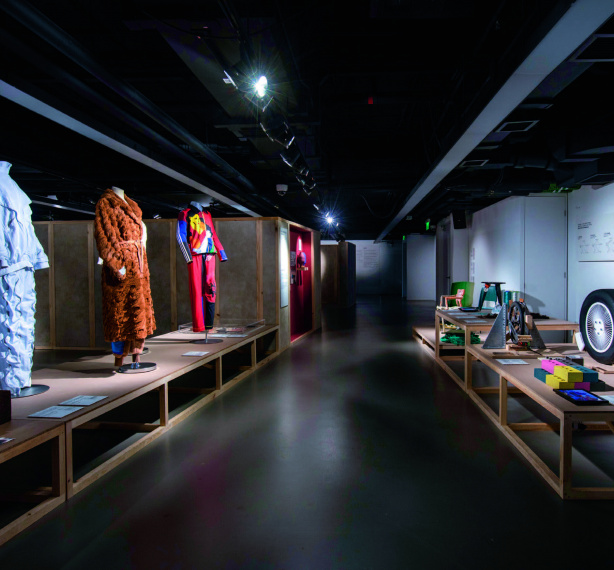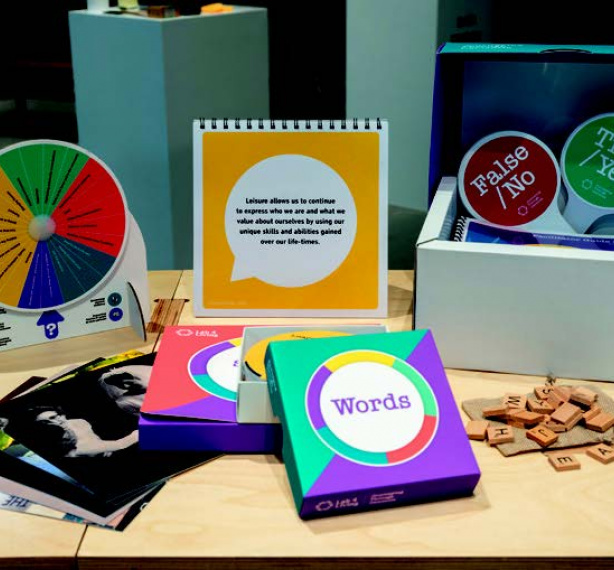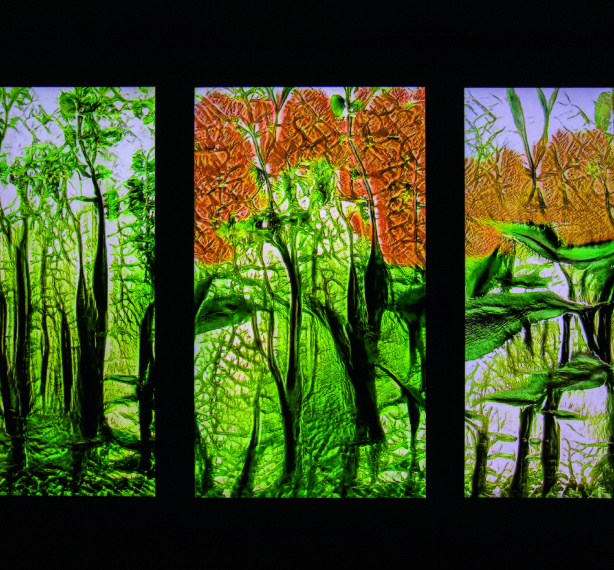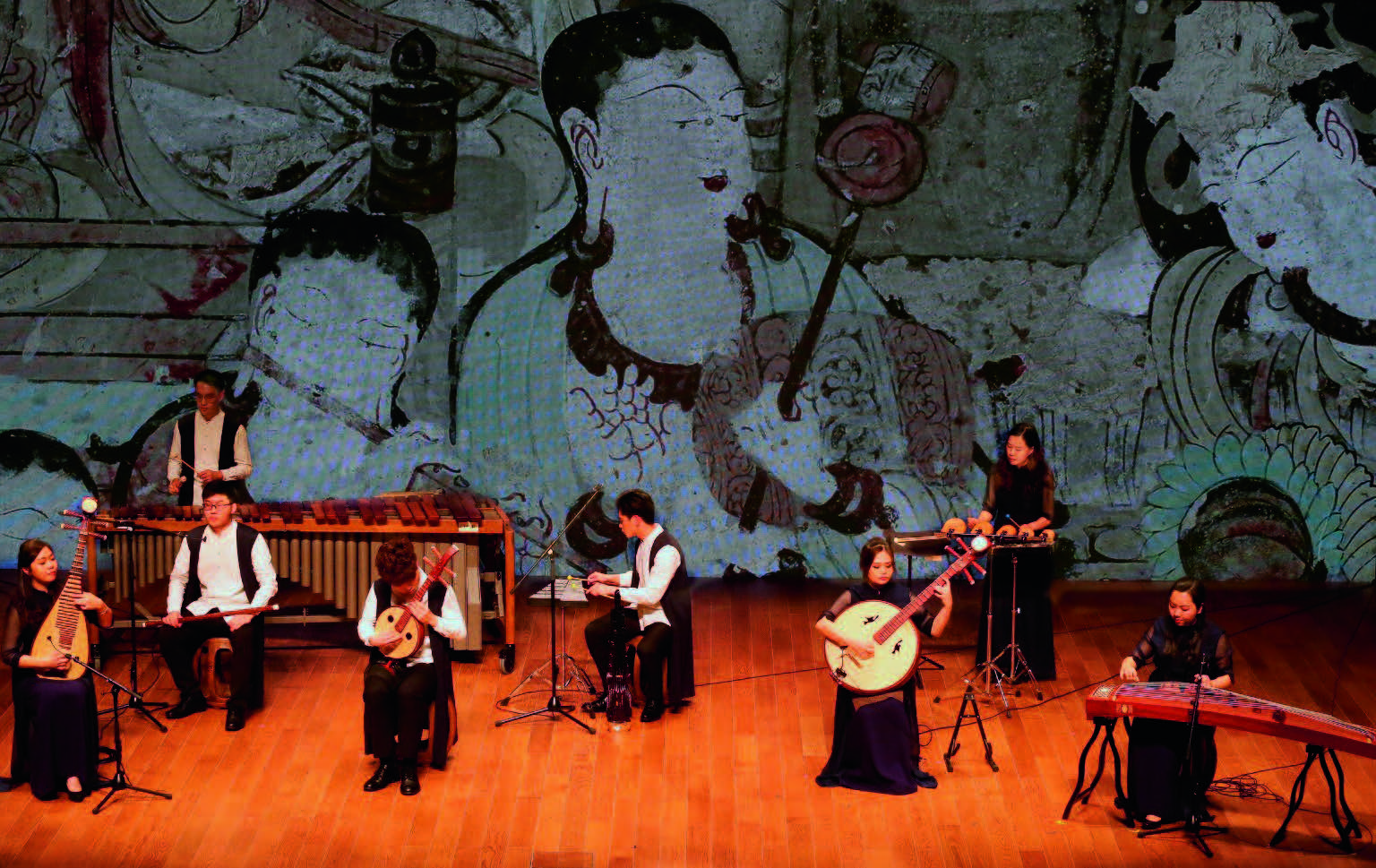
|
Ms Leonie Ki, the founder and honorary director of the Hong Kong Gaudeamus Dunhuang Ensemble, is a veteran advertising creative in Hong Kong. The seasoned communicator, writer, businessperson and investor is passionate about charity works and public services. The post-retirement time of the agile advertising guru and sophisticated management expert is dedicated to promoting the art and culture of Dunhuang. Her endeavours began with a youth music ensemble, which aims to modernising, rejuvenating and enlivening the ancient music of Dunhuang. The powerful art form and its associated sentiments are channelled into playing a part in the education and dissemination of Chinese culture.
Ki is a renowned advertising professional who sees innovation as the key to success. "I began my career with creative advertising, and I believe advancements must come from innovation. Yet, I can hardly compare my work with the imagination manifested in Dunhuang murals. Creativity is a requisite in everything that we do today. Unique insight is critical in our increasingly competitive market. 'To conserve, safeguard and innovate' is a concept that I learned from preserving Dunhuang's culture. We conserve the past, safeguard the present and innovate for the future. New elements must be introduced to touch the heart of the youth. Based on this philosophy, I have positioned the ensemble as a music group with deep cultural roots. Its mission is to educate and to promote the Chinese culture through music."
According to Ki, Dunhuang has much to offer about our national heritage that should be appreciated and understood by our youths. Dunhuang murals, for example, contain enriching, creative and all-encompassing contents. Classic Buddhist stories with crucial morals and ethics were drawn on them. The centuriesold dedication of its cultural guardians is also exemplary. In May 2018, she founded Hong Kong Gaudeamus Dunhuang Ensemble, which aims to rejuvenate, modernise, and enliven ancient music
creatively, such that the art form can perpetuate. Ki reckoned, "Murals alone would be inadequate to reinvigorate the art and culture of Dunhuang. We hope to give a soul to the murals through music, so that people can experience the true emotions embedded. This connection can then be transformed into an inspiration to spread the
art and culture of Dunhuang."
Situated in the wilderness of Gobi Desert, Dunhuang is one of China's most important world heritages. It is also the cultural connection for the East with the West and a thoroughfare along the Silk Road, where the ancient Chinese, Indian, Greek and Islamic cultures converged. Dunhuang grottoes are famed for their architecture, murals,
and painted sculptures. The Mogao Grottoes in Dunhuang dates back to more than 1,600 years ago. Housing the lofty art and culture of Buddhism, they have unique cultural significance and an important historic role, serving as a testimony to the religion's flourishing in China. The colourful and varied murals and sculptures in the grottoes form a shrine of Buddhist art. They do not only demonstrate unique artistic, cultural and academic values, but also show the world the beauty and profound cultural implications of Chinese art. The site was bestowed the title of a UNESCO World Cultural Heritage site in 1987.
It was 2010 when Ki first established a bond with Dunhuang. She visited the place for the very first time in an event that celebrated the 95th birthday of the late sinologist Professor Jao Tsung-I. During the visit, she was introduced to Ms Fan Jinshi, then director of the Dunhuang Research Academy. Fan's selfless dedication moved Ki deeply and Ki began taking part in raising funds for digitising Dunhuang grottoes. The Academy began digitising the invaluable artefacts, murals and sculptures of the grottoes since the end of the last century. This project was carried out to capture a permanent record of the relics and images of the grottoes, so as to safeguard them from further damages caused by natural and man-made disasters, and to provide more accurate and detailed information for future research.
"Without meticulous care and conservation, our world cultural heritage and the national treasure of art and culture will wither. 'To conserve, safeguard and innovate' is not my invention. It is the mission upheld by generations of guardians of Dunhuang culture. They know their calling and have dedicated their whole life working on it." For Ki, Dunhuang and Hong Kong are both geographical hubs and cultural melting pots, where the Eastern and Western civilisations come together. Ki's first visit to the place enlightened her about the past and present similarities between Dunhuang and Hong Kong. The glamorous relics of Dunhuang vividly depicts the political, social, cultural and everyday lives of the time. Yet, the glory of Dunhuang's antiquities may be seen as tumbled blocks for those not in the know.
Ki believes that education can effectively teach us how to cherish and love our cultural legacy. She arranged a series of field visits to Dunhuang, which included some study tours for teachers and students. Yet, after these events, participants returned to their busy school life. Apparently, the effect of individual visits is not easy to sustain.
Subsequently, Ki realised that despite the rich contents of the cave murals, the music and dance scenes painted on them were only two dimension. Without sound or movement, they can hardly touch people's hearts. Ki hoped that the ensemble she founded could bring Hong Kong's young musicians together to perform, conserve and popularise the music of Dunhuang using an innovative way. "Music is indeed an important element in Dunhuang murals. Amongst the cultural relics discovered in the Library Cave by Taoist priest Wang Yuanlu, 25 pieces of ancient musical notations were found. The notations were not readily understood. Detailed textual descriptions are scarce and there was certainly no recording equipment in the old days. It was rather impossible for the songs, dance and music to pass down the generations. Yet, Dunhuang murals were adorned with scenes of songs and dance, allowing us to have a glimpse of the instruments and music played of the time."
In early 2017, Ki brought a team of young Hong Kong music students to perform in Finland, where she met a few Hong Kong Academy for Performing Arts students. She suggested they form a Chinese music ensemble to play the lost music depicted on Dunhuang murals. The ensemble was successfully set up and the relevant research was supported by Dr. Zhao Shengliang, then deputy director of Dunhuang Research Academy.
In 2018, Hong Kong Gaudeamus Dunhuang Ensemble was officially founded. With two composers and eight young musicians on board, the 20-something team was inspired by Dunhuang murals in their creations. The original music they wrote for Dunhuang murals received critical acclaim and support by many. Over the past five years, the ensemble's art coordinator and resident composer Kam Shing Hei and resident composer Chu Kai Yeung wrote more than 40 pieces. The wonderful melodies are based on Chinese music and infused with Western elements, forming a novel music genre that has been praised as a breath of fresh air in the music community. The ensemble has performed in two world cultural heritage sites in China, including the Mogao Grottoes in Dunhuang and the Palace Museum. They were highly praised, and their artistic reinterpretation was fully recognised. The ensemble has also performed in many locations in China and Hong Kong. During Chinese New Year, it performed in Tokyo. Online and offline educational events were also conducted to demonstrate to the public and to promote Dunhuang music. It has achieved outstanding results within a few years' time.
Hong Kong has long been the gateway that connects China with the world. The role has been much strengthened in recent years to support the national goal of cementing Hong Kong's position as an international cultural exchange centre. Hong Kong Gaudeamus Dunhuang Ensemble strives to nurture talents, popularise Chinse music and spread the culture and art of Dunhuang through the interpretation of Dunhuang's ancient music and an all-rounded education programme. The novel way is expected to effectively catch the attention of Hong Kong citizens, especially the younger generation, encouraging them to become interested in Chinese culture and to learn more
deeply about it. The message to educate and safeguard China's world cultural heritage will take root and bloom in Hong Kong.
|


